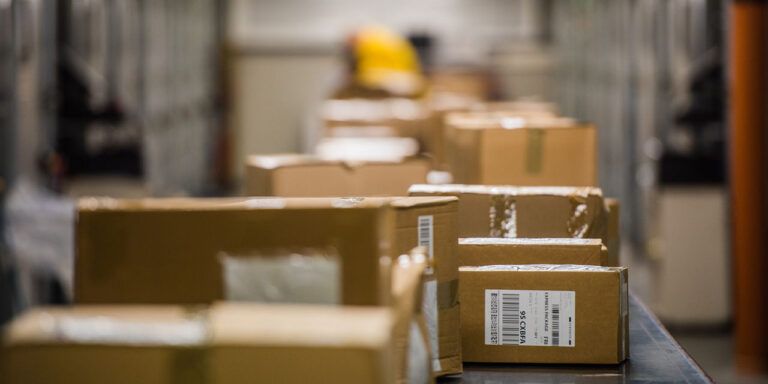6 keys to fresh optimization in convenience retail
Oct 29, 2024 • 6 min
The humble corner store is changing. Consumers no longer see convenience retailers as a place to pick up a loaf of bread and maybe a snack on the way home from work. These days, people expect a mini grocery store with a wider variety of product options and close attention to fresh items.
This diversification requires sophisticated inventory management to balance variety with freshness. After all, these compact stores have only so much shelf space.
When you break it down, there are six essential aspects to optimizing fresh items in convenience retail.
1. Keep up with emerging trends in convenience retail
When working with such limited shelf space, keeping up with emerging consumer trends is critical. Convenience retail has no room for error, and consumer habits are changing rapidly. Thankfully, you’re already keeping tabs on emerging trends by reading this.
Here are the top trends we’re seeing right now:
- Increased demand for fresh products: Consumers increasingly seek healthy, ready-to-eat options. Retailers must adapt by offering a wider variety of these products or risk falling behind competitors.
- Growth of online shopping (with delivery options): The proliferation of delivery services has transformed how consumers shop, and there’s no going back. To stay in the game, you’ll need an option allowing customers to buy from you using their phone. You’ll also need to offer delivery options to meet the expectations of today’s consumers.
- Expanding assortment options: To attract a broader customer base, convenience stores everywhere are expanding their product assortments. This expansion includes not only fresh and healthy items but also specialty and niche products, responding to the unique tastes of their local markets.
- Improving supply and space management: Managing a diverse product range requires efficient supply chain operations and optimal use of store space. More convenience retailers are discovering that supply and effective space management are crucial to meeting customer expectations today.
- AI-driven solutions for optimal inventory levels and reduced spoilage: Leveraging AI-driven demand forecasting and replenishment solutions can help retailers reduce inventory, minimize spoilage, and enhance overall efficiency.
Expect these trends to change over time. No area of retail is immune to change, but convenience retailers must remain more agile than most areas of retail to stay ahead of competitors.
2. Balance freshness and availability
As consumers increasingly prioritize health and wellness, demand for fresh, ready-to-eat options continues to rise. Retailers must adapt by maintaining a consistent supply of high-quality, fresh products on their shelves through more sophisticated fresh item management.
But the stores aren’t getting bigger at the rate that assortments are growing. So, managing limited shelf space while keeping a steady supply of fresh products is a top concern of many convenience retailers.
Consider a convenience retail brand that introduces fresh sandwiches to the offerings. Over summer, a sudden heatwave hits, causing an immediate surge in demand for fresh, ready-to-eat items. The store’s small footprint makes it challenging to keep up with the unexpected surge. Shelves quickly empty, leaving customers disappointed and impacting sales and customer satisfaction.
This convenience retailer could have used AI to improve forecasting and replenishment so the stores would have been ready for the heatwave. AI can predict demand patterns and account for seasonal variations, keeping stock levels optimal year-round without overstocking.
Efficient fresh inventory management software minimizes waste, so fresh products are sold before they spoil.
3. Address phantom inventory
Implementing real-time inventory tracking systems can help maintain accurate stock levels and reduce discrepancies, known as phantom inventory.
These systems provide up-to-the-minute data on inventory status, allowing users to quickly find and fix any issues, such as stockouts or overstock situations.
Many convenience stores have such a small footprint that they can only accommodate one or two staff members on-site. So, employees must simultaneously stock shelves, run the register, and serve (or sometimes even make) the fresh items.
When employees are responsible for so many parts of running the store at once, it’s impossible to manually monitor inventory for timely replenishment. Given that convenience stores usually have little to no storage space on site for backup stock, it’s even more important that these stores accurately anticipate customer needs.
With a precise view of inventory from technology like predictive inventory, retailers can make informed decisions about restocking and product placement, ultimately enhancing the shopping experience. Regular audits and AI-driven insights can help identify and correct inventory inaccuracies, keeping fresh products available without the risk of overordering.
4. Refine online shopping and delivery services
The growth of online shopping with delivery options has transformed consumer expectations. Retailers now need to integrate online and offline inventory management to ensure that fresh products are available for both in-store shoppers and online orders.
Competitive pressure is increasing as local grocery stores offer more products at potentially lower prices than convenience retailers. However, there are situations where convenience stores can still outperform larger stores.
For example, customers who want to preorder fresh items for pickup along their commute or who are in a rush and want an easy, predictable fresh food option while on a road trip could order online or through an app. The customer can see what’s available and get their order in at the right time so they can pick up their food quickly and get back on the road.
Retailers must be able to integrate inventory management across all channels to guarantee fresh products for in-store, curbside pickup, and home delivery. AI-driven forecasting can help maintain accurate inventory levels for all shopping channels, reducing the risk of stockouts and delighting customers.
Meeting customer expectations for fresh products across all channels will increase repeat business and customer loyalty.
5. Overcome labor shortages and improve employee efficiency
Automation significantly benefits convenience retailers by shifting employees from routine tasks to more customer-focused activities, enhancing the shopping experience. This move streamlines operations and elevates customer service, which is crucial for building loyalty.
Because employees have to balance various tasks simultaneously, the best thing convenience retailers can do for employee efficiency is use specific types of automation to take the burden of the most mundane, manual tasks.
Automated inventory counts can alleviate employee stress, allowing the employee to focus on immediate customer needs and maintain store standards. These technologies decrease the time and effort needed for routine tasks, allowing staff to offer improved service and ensure a more enjoyable shopping experience.
For example, retailers can use automated inventory systems requiring less manual oversight and streamlined self-checkout systems that reduce waiting times. By reducing manual, repetitive work, automation improves employee satisfaction and retention. Engaged employees are likely to stay longer, reducing the costs and disruptions of high turnover rates common in retail.
6. Leverage AI to reduce waste
AI algorithms can analyze historical data, seasonality, and external factors to accurately predict demand and ensure optimal stock levels.
Streamline the replenishment process by reducing manual intervention and maintaining timely restocking of fresh products. AI can forecast spoilage rates and seasonal demand fluctuations, helping retailers adjust inventory accordingly.
Accurate data minimizes the risk of overproduction, such as baking too much bread for sandwiches or ending up with brown bananas. AI can uncover patterns in daily, weekly, or monthly sales variations, providing a better understanding of demand. Without a robust solution, you might miss critical insights, like the true buying patterns for sandwiches, leading to inefficiencies and waste.
By aligning inventory with actual demand, retailers can reduce waste and increase sales, boosting overall profitability.
Keeping it fresh
Optimizing fresh inventory in convenience retail is a multifaceted challenge that constantly changes with consumers’ needs. Currently, convenience retailers should refine their approach to maintain a balance between freshness and availability, vigilant management of phantom inventory, and an effective approach to offering customers online ordering and delivery options.
By leveraging AI-driven solutions and maintaining agile and efficient inventory management practices, convenience retailers can meet and exceed customer expectations for fresh products. Staying ahead of these trends and technological advancements will be key to growth and customer satisfaction in the current convenience retail market.



